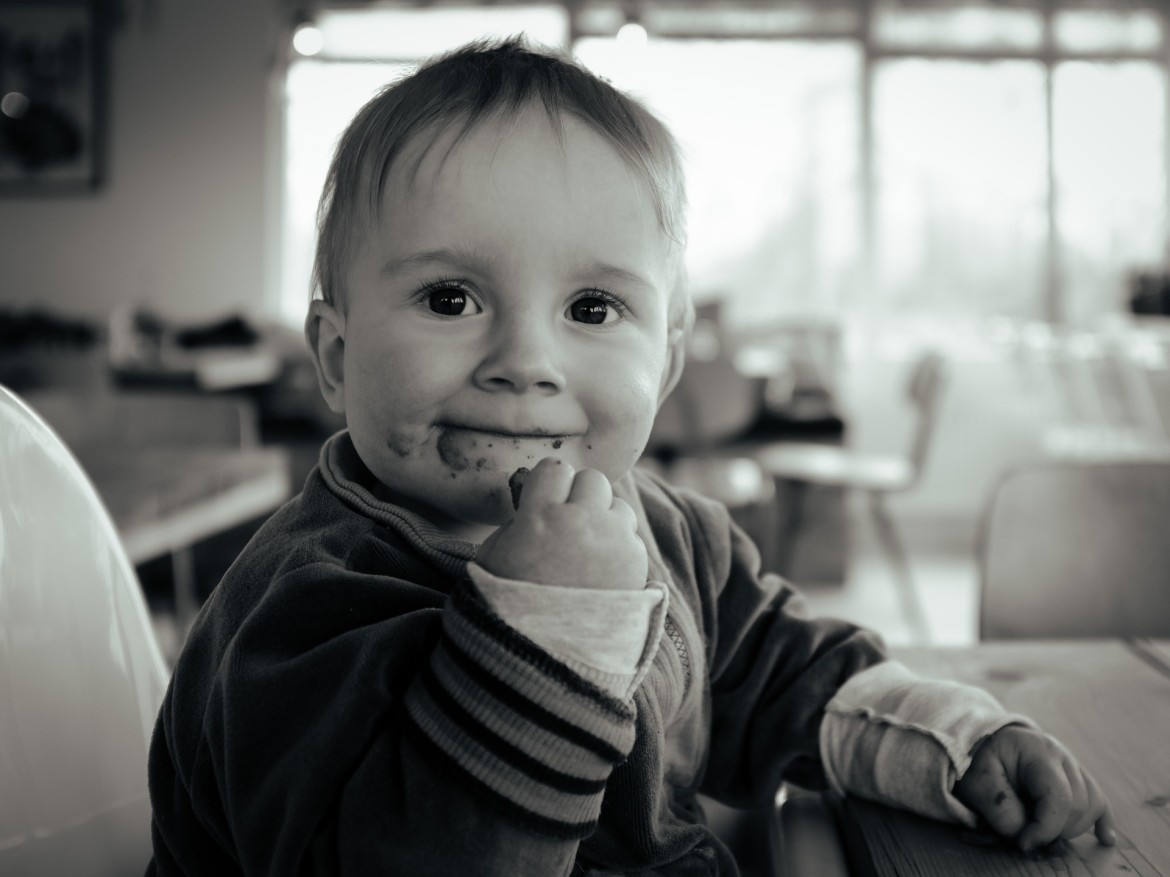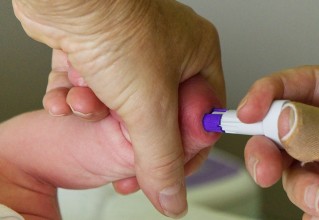Episode Review: Babies - First food
23 Aug, 2020Always a fan of a good doco, I was really excited to see this documentary on Netflix on the reason we are all here – Babies! The first episode I watched was Episode 2 – Babies First Food and I thought I knew a lot but boy was it an eye opener.
The documentary opens with the basics, food affects your immune system as we all know – that’s why its important to eat healthy and have a diverse gut bacteria. But particularly for babies, the food they ingest in those early months and years relates to whether they will develop disease or not later in childhood. So it’s even more important for research and funding to be invested into finding out what the important nutrients that babies need and how do they get them and how does this go on to shape their lives.
The episode is made up of three segments, the first on breastmilk with perspectives from Anthropologist Katie Hinde Associate Professor from Arizona State University, the second on micronutrients and solids with research from Michael Georgieff Professor in Pediatrics and the third on Microbiome and gut bacteria, with Susan Lunch, Department of Medicine from University of California.
Let’s take a look at each one.
Breast Milk
Breastmilk is not standardised
Katie Hinde explains that from the research done in the 80s, there was a perception that milk was standardised among women. However, what they found when they analysed the breastmilk of monkeys was a number of patterns in the composition of the breastmilk. The mothers were making a different biological recipe for the milk depending on whether they had a son or a daughter. The breastmilk for sons was more energetically dense, and the breastmilk for daughters a higher calcium phosporous ratio – possibly because bone development in daughters is faster than it is for sons because females reach adulthood quicker than males. Similarly, a study on 1.5 million dairy cows also showed that there were patterns in breastmilk production based on the gender of the offspring. After producing a daughter, cows produced significantly more milk than if they produced a son. Scientists still don’t know why exactly that is.
The Daughter Effect
Through another study looking at 112 thousand of those cows, they found that having a daughter on the first pregnancy increased the amount of milk produced on the first, and the second lactation. That means that having a daughter has a long lasting effect on the amount of breastmilk that cow’s mammary glands were able to produce. This doesn’t just apply to cows. Apparently, we are also starting to see this evidence of the daughter effect in the breastfeeding outcomes of humans. This also shows that if the mammary gland is able to produce more milk with subsequent babies, if mums are having a hard time breastfeeding their first baby, they don’t need to worry because they might have more success if they try later on with the second.
Milk is bespoke
The biggest pattern they identified is that milk is bespoke. Individual mums made individualised milk for each individual baby. Milk can also change across time – that is during the day the composition of breastmilk changes, and in response to the baby’s needs. For example, the signature the milk produces changes during the day with the amount of fat, protein, carbohydrates, the amount of water and volume of milk. If your baby gets fussy or changes the pattern of when they nurse and how they nurse, this affects the milk being produced.
Additionally, when a mother’s body detects that their baby is fighting an illness, her immune system then creates antibodies that will protect the baby and fight the viruses, bacteria and pathogens, and this is provided to their bebito via the breastmilk. There are also hormones in the breastmilk that go from the mothers’ body into her breastmilk and it acts as a way to communicate thing from mother to baby, that influences their development from their brain to their metabolism and behaviour. It’s a physiological conversation between the two with signals and messages encoded in the breastmilk that is responsive to the baby’s needs.
Further Research
Understanding all of the above, I still had a number of questions like, what if you have twins? How does your body know whether to produce the milk for the boy baby or girl baby? Does each breast produce slightly different milk? What if you breastfeed someone elses’ baby – is this bad for them? What about those women who have an overactive mammary gland and produce so much breastmilk they donate it and pump full time – their babies are grown up – how does their body know what composition breastmilk to produce when its going to so many mystery babies?
Lots and lots of questions. Not many answers unfortunately. I did however find a couple of studies on breast milk production that suggest that mums may not be able to create sex specific milk for twins:
https://milkgenomics.org/article/twin-study-suggests-moms-make-sex-specific-milk/
Solids
Michael Georgieff Professor in Pediatrics discusses how he has come to understand how nutrition ha shaped our lives across the lifespan. Most families biggest concern is feeding – they want to know that their baby is getting enough milk to grow and develop. But weight gain is only one part of growth – what you really want to see in a healthy baby is proportional growth, that is, that their weight, length, brain growth are all moving together.
Micronutrients
What Michael Georgieff found when he started studying proteins in babies in 1983, ans that the proteins were showing that some babies were iron deficient. We all ingest tiny amounts of metals like iron, zinc and copper as micronutrients in our diet, and these metals affect the complexity of the brain and are really important for learning and memory.
Babies usually have plenty of iron as they stockpile it in the womb and then have the iron they need for the first four or so months earthside - hence why this finding was a surprise because previous scientific understanding was that there should not be any iron deficient babies. But what they discovered that for mums with high blood pressure, diabetes and mums who smoked cigarettes, the iron was not completely getting across from the mom to the foetus through the placenta in the womb.
Iron and brain development
Research had shown that older children with iron deficiency have some memory issues, so they wanted to see if the same thing applied to babies or not. Since its difficult to ask a baby to a memory task for obvious reasons, what they did was put an EEG net on the baby’s head to measure its electrical activity from the brain. The test was to see if the baby could recognise its mother’s voice from a stranger’s voice which would require them to use their memory system which requires iron to function. They played the mums voice saying baby and then a stranger’s voice saying baby and measured the EEG pattern of the baby’s brain responding to that and the difference in the results were dramatic. For the babies that had enough iron in their body, the response to their mother had a very different EEG pattern and curve than the response to the stranger, meaning they had a great memory. But for the babies who were iron deficient on the other hand, there was no real difference in the EEG pattern when they heard their mums voice and the strangers voice. What this study suggests is that the baby’s hippocampus, the area of the baby’s brain involved in learning and memory, is not functioning as well due to the lack of iron. Through this you can see that nutrition can have neurological consequences.
Pre-Natal and Post-Natal Nutrition
From this research they realised that they needed more education for parents on pre-natal nutrition and make sure that mums were getting the iron they needed during pregnancy so that they can stockpile it in the womb. This meant educating mothers on having a healthy diet and taking steps to avoid gestational diabetes, not smoking and reducing risks of blood pressure. These micronutrients are building blocks for the baby’s brain but they are also building the baby’s temperament and personality so in fact, what you eat is directly creating your tiny human. Parents can make sure that their baby is getting enough iron by paying attention to their diet. There are lots of sources of iron like cereals fortified with iron, and after six months of age even meat, fish, dark leafy vegetables, lentils. It’s a time to experiment with different types of foods with the baby and let it play with its food, touch it, and decide what and how much it wants to eat so that your baby grows to have a positive relationship with food and responding to its own body.
Having said that, micronutrient deficiencies are very common. This episode states that 1.8billion people are iron deficient and another 900 million are iodine deficient. If we could get rid of those deficiencies, he suggests we would shift the world’s IQ positively by 10 points!
Further Research
Again, this segment has raised a lot of questions in my mind like does an iron deficient baby have a lower IQ and can this be changed if they later eat more iron as a toddler, or teenager? Does culture and ethnic genetic predispositions have any impact on the deficiencies a baby may have pre-natally or at birth or its ability to absorb certain nutrients? If parents know they have certain genetic conditions such as pre-disposition to be a coeliac, have heart disease, cancer in the family, diabetes etc, are there specific diets that a mother can eat during pregnancy to give her baby the best chance of success at not presenting with these diseases later in life?
I couldn’t find any studies that specifically showed what you should eat pre-natally that would reduce the risk of specific diseases in your family history – most studies just suggest you should eat a healthy diet and green leafy vegetables and take multi-vitamins. Here is one however on reducing the risk of mental illness by micronutrient supplements in pregnancy:
https://www.ncbi.nlm.nih.gov/pmc/articles/PMC6984656/
Microbiome
The last segment of this episode was on Microbiome and gut bacteria, featuring subject matter expert Susan Lynch, Professor, Department of Medicine in University of California. Susan Lunch discusses microbiology and microbes “We tend to think of microbes as something very simple, single cell organisms. But I think what we need to remember is that microbes are the oldest and most successful life form on this planet.” How quickly does that put us in our place?
We are a colony of microbes
She explains that by six months of age, even under the most watchful parent, babies are putting all kinds of things into their mouth and on those things are microbes. There are single celled organisms like bacteria, fungi, viruses and they are ancient and adaptable and they exist everywhere. It is actually really important for babies to ingest microbes in early life and as we are all made up of microbes and human cells and even a 1 month old baby has a complex ecosystem in their body composed of thousands of different types of bacteria. We are understanding more about how this gut microbiome influences our health and we can even predict based on the gut microbiome which babies will go on to have a healthy life and which babies may develop diseases.
Pets and microbes
Along with their collaborators at Henry Ford hospital, they wanted to see if microbes are the link that show that babies who are exposed to dogs and to a lesser extent cats in early life are protected from developing immune diseases like asthma in childhood. So what they did was go into the homes where babies are present and collect dust samples from the houses with a vacuum cleaner and then tested the DNA from the dust sample to see what type of microbial species were present (which babies would presumably touch and then put into their mouths and ingest). With a few grams of dust they could get an understanding of a whole profile of microbes in the household and what they discovered was that in homes with no pets, there is no bacterial exposure – babies raised in these households have a greater chance of developing asthma in childhood. In homes where dogs were present, and to a lesser extent cats – there is a much broader diversity of bacteria in those homes that the babies are exposed to, which protects them from developing asthma.
Gut bacteria and disease
In their next study, they collaborated with Henry Ford hospital and looked at stool samples of 130 babies from early life through to childhood with a database with information on which babies had developed allergies and asthma years later. They looked at the samples for babies at 1 month of age to determine which of the microbes in their stool may have prevented them from developing allergies and asthma years later. There was a lot of data and what the found was that not all babies have the same gut microbial colonisation in early life; there are three distinct gut microbiome compositions that are evident in 1 month old babies. Two of them are associated with a lower risk of developing allergies and asthma, and the other type has a much higher risk of developing allergies and disease in childhood. This is a great breakthrough because we can predict disease in childhood and intervene earlier to try and prevent this from occurring and perhaps even use gut bacteria as a type of treatment.
While we don’t know exactly what a healthy microbiome looks like at this stage in order to make recommendations for a baby, we know that diet influences the types of microbiomes in the gut, and that a sterile environment is not beneficial for a baby to have a healthy life. Homes that are rich in micro bacterial exposure like farms, homes with pets, even mice and cockroaches in inner city environments, are actually protective against developing disease in childhood.
Further research
Again, this has left me with a number of questions. How do microbiome tests analyse your gut bacteria to tell you which foods you should and shouldn’t eat? How does that even work? How much should you protect your kids from harmful bacteria – what is the right balance between them living in filth and a ‘sterile’ environment? Surely there are some diseases on a farm that are bad for you that can make you very very sick – how do you let children be exposed but avoid that?
For example, there is lots of guidance suggesting that pregnant women should not be near any animal giving birth or a newborn animal:
https://www.nidirect.gov.uk/news/pregnant-women-advised-avoid-animals-giving-birth
In Summary
Finally, food and how we share our food and our relationship with food and being part of a family are all really important. The micronutrients in the food is what is building your baby. This was an extremely insightful and informative episode and I really enjoyed it. I hope you enjoyed my review and some of the questions I have had have also sparked your own interest in further information that would benefit parents in raising healthy little tiny humans.
Get The Best Of Sleepy Roo Delivered To Your Inbox
Subscribe to my newsletter and get the latest info on baby sleep! You can unsubscribe at any time.



